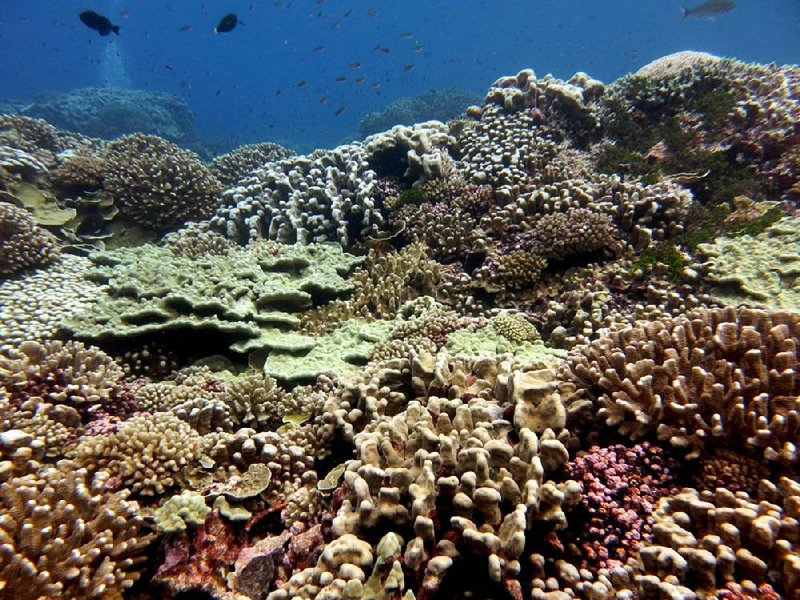SAN DIEGO -- As ocean warming continues to trigger widespread destruction of coral reefs, a decadelong study of remote islands in the central Pacific suggests these biodiversity hot spots may be able to thrive despite the threats posed by an increasingly hotter planet.
With many parts of the globe in the grip of a nearly two-year coral reef bleaching event -- fueled in part by El Nino-driven ocean warming -- scientists and marine conservation advocates have feared many reefs could suffer irreparable damage and fade from existence in coming decades.
A new report from the University of California-San Diego's Scripps Institution of Oceanography provides reason for optimism by highlighting the potential for preservation efforts. In a project spanning 56 islands, researchers documented 450 coral-reef locations from Hawaii to American Samoa, with stops in the remote Line and Phoenix islands as well as the Mariana Archipelago.
The results -- published in the journal Proceedings of the Royal Society B -- show that coral reefs surrounding remote islands were much healthier than those in populated areas that were subject to a variety of human interaction.
"There are still coral reefs on this planet that are incredibly healthy and probably look the way they did 1,000 years ago," said Jennifer Smith, lead author of the study and a professor at Scripps' Center for Marine Biodiversity and Conservation.
"The scientists were practically in tears when we saw some of these reefs," she said. "We've never experienced anything like it in our lives. It was an almost religious experience."
Teeming with sharks, manta rays, jellyfish and sea turtles, these remote locations contrasted starkly with the heavily populated areas, which were encircled by coral reefs covered in murky seaweed and lacking much of the colorful algae that helps to cement a reef.
"All of these islands have reefs surrounding them," Smith said. "It's just what's growing on them. On the inhabited islands, you have some corals here and there, but most of those corals are being smothered by these weedy seaweeds."
In recent decades, coral-reef ecosystems worldwide have suffered significantly from overfishing, coastal development and dumping of toxic substances into ocean waters. Scientists have predicted that up to 70 percent of coral reefs could be lost by midcentury.
Occupying less than one-tenth of 1 percent of the seafloor, coral reefs are estimated to be home to nearly a quarter of all marine species. They also provide several human benefits, including food, tourism and flood protection for coastline developments.
It's hoped the new study will catalyze coral-reef preservation efforts, which some have viewed as futile, said Stephanie Wear, senior scientist for the reef conservation program at the Nature Conservancy.
"I think it can energize people who are responsible for managing [reefs] that what they're doing really does matter," she said.
Still, localized efforts to safeguard coral reefs likely will stave off only the worst effects of global warming for so long, said Nancy Knowlton, a coral-reef biologist and holder of the Smithsonian Institution's Sant Chair for Marine Science.
"The question is, how long will reefs be able to stay healthy in the context of much more frequent warming events and ocean acidification?" said Knowlton, who previously worked at Scripps and participated in the reef project's initial research. "I think most reef scientists will say there are limits."
SundayMonday on 03/27/2016

